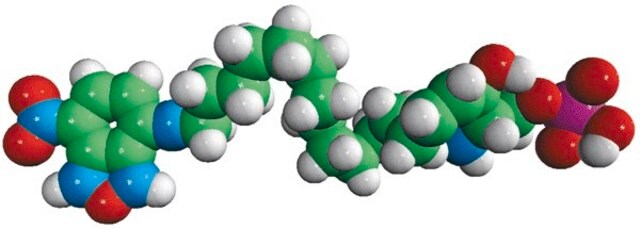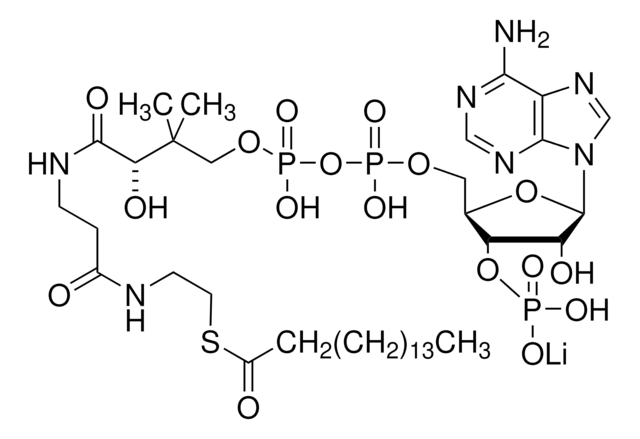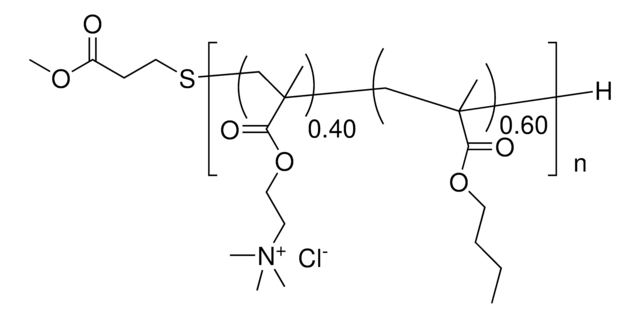870716P
Avanti
16:0 Coenzyme A
Avanti Research™ - A Croda Brand 870716P, powder
Synonym(s):
palmitoyl Coenzyme A (ammonium salt)
About This Item
Recommended Products
form
powder
packaging
pkg of 1 × 10 mg (870716P-10mg)
pkg of 1 × 25 mg (870716P-25mg)
pkg of 1 × 5 mg (870716P-5mg)
manufacturer/tradename
Avanti Research™ - A Croda Brand 870716P
application(s)
lipidomics
lipid type
coenzymes
shipped in
dry ice
storage temp.
−20°C
SMILES string
O[C@@](C(NCCC(NCCSC(CCCCCCCCCCCCCCC)=O)=O)=O)(C(C)(COP([O-])(OP([O-])(OC[C@H]([C@H]1OP([O-])(O)=O)O[C@H]([C@@H]1O)N2C3=C(C(N)=NC=N3)N=C2)=O)=O)C)[H].[NH4+].[NH4+].[NH4+]
InChI
1S/C37H66N7O17P3S.3H3N/c1-4-5-6-7-8-9-10-11-12-13-14-15-16-17-28(46)65-21-20-39-27(45)18-19-40-35(49)32(48)37(2,3)23-58-64(55,56)61-63(53,54)57-22-26-31(60-62(50,51)52)30(47)36(59-26)44-25-43-29-33(38)41-24-42-34(29)44;;;/h24-26,30-32,36,47-48H,4-23H2,1-3H3,(H,39,45)(H,40,49)(H,53,54)(H,55,56)(H2,38,41,42)(H2,50,51,52);3*1H3/t26-,30?,31+,32+,36-;;;/m1.../s1
InChI key
VJXJWGKNGIGUQX-AUCFWDBISA-N
General description
Application
- standard in mass spectrometry for qualitative analysis of palmitoyl acyl-CoA in mycobacterium cells
- constituent of the binding buffer in protein in vitro binding assay
- substrate in serine palmitoyltransferase assay
Packaging
Legal Information
Storage Class
11 - Combustible Solids
Choose from one of the most recent versions:
Certificates of Analysis (COA)
It looks like we've run into a problem, but you can still download Certificates of Analysis from our Documents section.
If you need assistance, please contact Customer Support.
Already Own This Product?
Find documentation for the products that you have recently purchased in the Document Library.
Our team of scientists has experience in all areas of research including Life Science, Material Science, Chemical Synthesis, Chromatography, Analytical and many others.
Contact Technical Service



